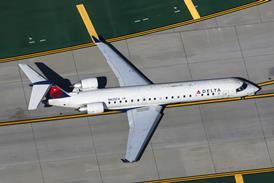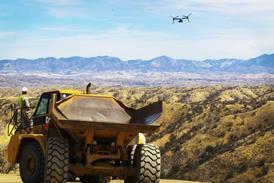Airlines are finally considering fitting telemedicine equipment.
Patrick Hook/LONDON
DESPITE THE HUGE costs involved every time a scheduled service is diverted from its route to off-load a sick passenger, airlines have always demonstrated a reluctance to fit their aircraft with telemedicine equipment which might improve a flight-crew's response to a medical emergency. That situation may be about to change, however.
US carrier United Airlines began a three-month trial in July of a Vital Signs Monitor, developed by UK-based Telemedic Systems of Somerset, which can be used to measure a patient's blood pressure, heart rate and other vital pulses, and transmit them, in real time, to a doctor on the ground. During the trial, limited to internal US flights, United will be relying on VHF radio to transmit the data to the ground.
"While in-flight medical emergencies are rare, we are eager to test this product," says Dr Gary Kobn, United's medical director. If the scheme proves successful, the monitor will be fitted to aircraft flying on international routes with transmission via an Inmarsat satellite.
HIGH INVESTMENT
"Telemedicine" is defined by the European Commission as "-rapid access to shared and remote medical expertise by means of telecommunications and information technologies, no matter where the patient or relevant information is located".
Airlines have always argued that the low incidence of on-board mortality and morbidity among passengers, (25 deaths and 559 requests for medical assistance in 1994, out of a total of 30 million passengers carried), weakens the case for investment in equipment costing at least £10,000 ($16,000) per aircraft.
Another major stumbling block has been that, until about 18 months ago, aero-communication systems were not compatible with the X-25 protocol of national and international telecommunication networks. When telecommunications began using satellite links, the first aircraft on-board satellite-telephone (satphone) systems, developed by Racal and Honeywell and capable of dealing with the dynamics of flying and computability with X25 services, were aimed very much at passenger use.
Now, aircraft entering service with British Airways, United and other airlines are fitted with satellite communications (satcom) to deal with operational communications, engine monitoring and navigational and weather data, making the use of telemedical equipment more viable.
BA's senior aviation physician, Dr Michael Bagshaw, says: "BA Healthcare Services [BAHS] is exploring the possibility of using one or more spare channels in the satellite-communication system for the development of a telemedicine link between the aircraft and BAHS doctor."
While the more advanced systems allow access to patient records, medical libraries and insurance data relating to medical cover, the primary purpose of the technology is simpler and is designed to provide the support of the world's leading specialists whenever and wherever it is required. The Vital Signs Monitor does that by providing, directly to the physician, first-hand information on aspects of the patient's health.
Useful though this equipment is, it does not provide the video image, which many doctors consider important. Doctor George Anogianakis of the Department of Physiology at the University of Thessaloniki in Greece says that visual inspection is "a cardinally important part of the formal examination". An image of the patient in real time makes "-it possible to create a strong sense of shared presence and shared space between the local operator and the doctor".
Conversely, the absence of a visual image significantly increases the chances of a misdiagnosis. UK manufacturer Nera, with British Telecom, has developed the CAMNET (Camera over the Network) system, which combines high-definition screens, micro video-cameras, personal-computer technology and Inmarsat high-speed data (HSD) satcom capability, to enable live film footage of a medical or other problem to be viewed by hospital-based experts. The equipment, fully mobile at the "patient" end, consists of a headset containing a tiny camera, miniature screen, microphone and earpiece, all connected by a cable to the battery, camera controls and operator computer-on-a-belt pack. A microwave link carries the data to and from a video recorder and Saturn satphone for transmission.
QUALITY VIDEO IMAGES
While the system works on ISDN lines, these are unavailable to aircraft in flight and this is where Inmarsat HSD satcom comes into its own. Transmitting at 64K/bps, the Nera Saturn Compac-T (for Inmarsat-A) and Nera Saturn Bp or Bt (for Inmarsat-B), fitted with a duplex HSD receiver option, produces a good enough image of the patient to permit diagnosis.
The cost of a full telemedicine system - about £80,000 for CAMNET and associated satphone - means that the service is unlikely to be taken up by airlines, at least until prices begin to fall appreciably. BA says privately that it may rethink its reluctance to purchase telemedic equipment if United goes ahead with a programme of its own. If that happens, it would be difficult for other airlines not to follow suit.
Source: Flight International























